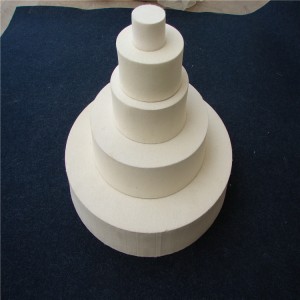The manufacturing process of wool felt wheels is undergoing a significant transformation with the advent of automation technology. As industries increasingly demand higher – quality products at a faster pace, manufacturers are turning to automated systems to streamline production, improve precision, and reduce costs. This automation revolution is not only reshaping the way wool felt wheels are made but also setting new standards for the industry.
Automated production lines for wool felt wheels start with the precise handling of raw materials. Advanced robotic arms are now used to accurately measure and distribute wool fibers, ensuring consistent density and quality in each wheel. Unlike manual processes, which can be prone to human error, these automated systems can maintain a high level of accuracy, even when producing large quantities of wheels. For example, in a large – scale manufacturing facility, a robotic system can precisely layer wool fibers according to predefined specifications, resulting in wool felt wheels with uniform thickness and texture.
The felting process, a crucial step in creating wool felt wheels, has also been enhanced by automation. Computer – controlled felting machines can adjust parameters such as temperature, pressure, and agitation speed in real – time. This allows for the optimization of the felting process based on the type of wool and the desired characteristics of the wheel. For instance, when producing wool felt wheels for delicate jewelry polishing, the automated felting machine can apply a gentle yet consistent pressure to create a soft and fine – textured wheel. At the same time, for heavy – duty industrial applications, the machine can increase the pressure and agitation to produce a more durable and dense wheel.
Quality control is another area where automation is making a significant impact. Automated inspection systems equipped with high – resolution cameras and sensors can detect even the slightest defects in wool felt wheels. These systems can analyze the surface texture, thickness, and overall shape of the wheels, ensuring that only products that meet strict quality standards are released to the market. Any wheels that fail the inspection are automatically removed from the production line, reducing the likelihood of defective products reaching customers. This not only improves customer satisfaction but also helps manufacturers maintain their brand reputation.
The adoption of automation in wool felt wheel production also brings economic benefits. By reducing the need for manual labor, manufacturers can lower production costs and increase their profit margins. Additionally, automated systems can operate continuously, 24/7, significantly increasing production capacity. This allows companies to meet growing market demands more effectively and gain a competitive edge in the industry.
As automation technology continues to advance, we can expect to see even more innovative applications in wool felt wheel production. From the development of more intelligent robotic systems to the integration of artificial intelligence for process optimization, the future of wool felt wheel manufacturing looks promising. The automation revolution is here to stay, and it will undoubtedly drive the industry forward, leading to the creation of higher – quality, more efficient, and more cost – effective wool felt wheels.

Post time: Jun-06-2025
